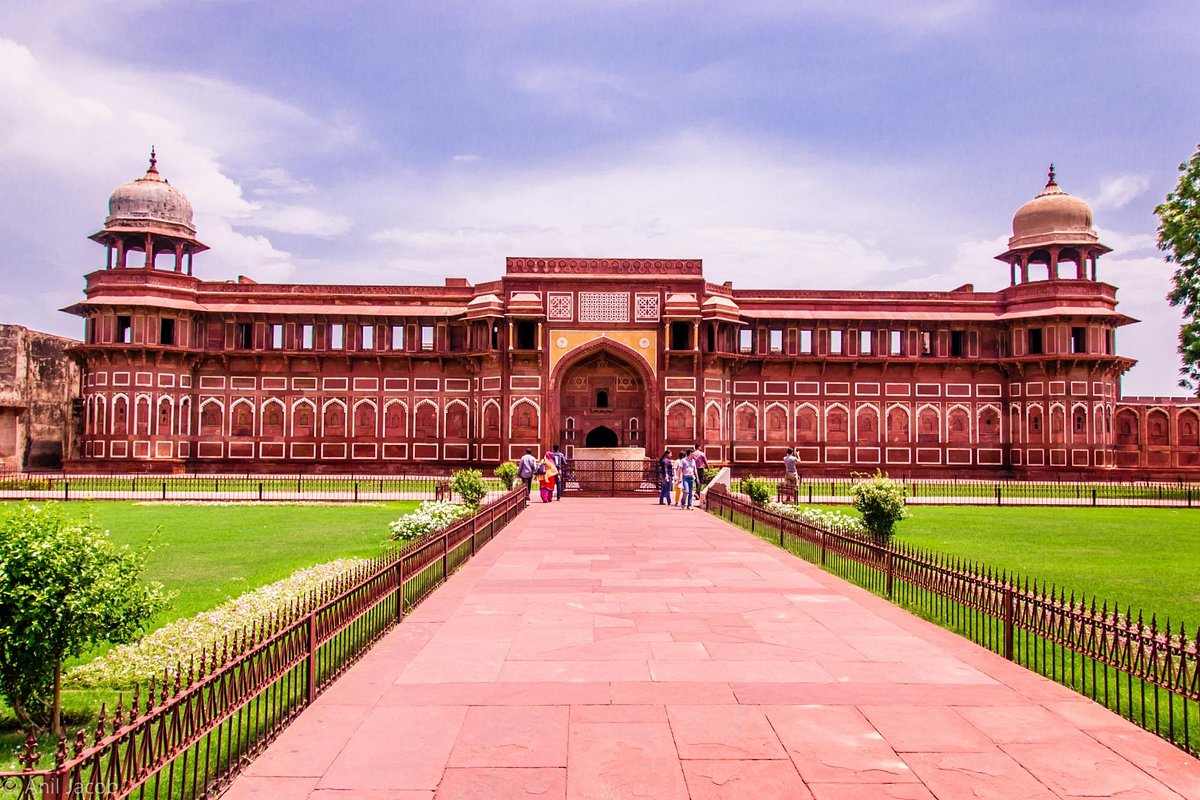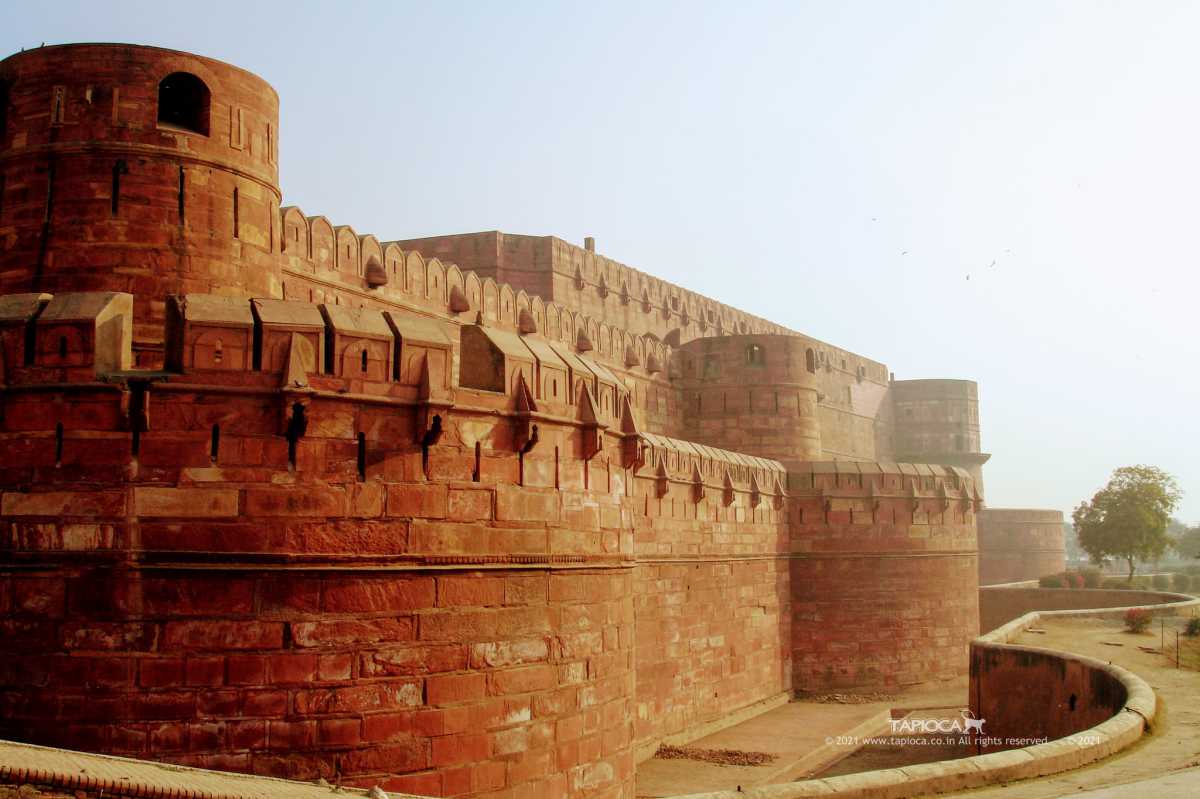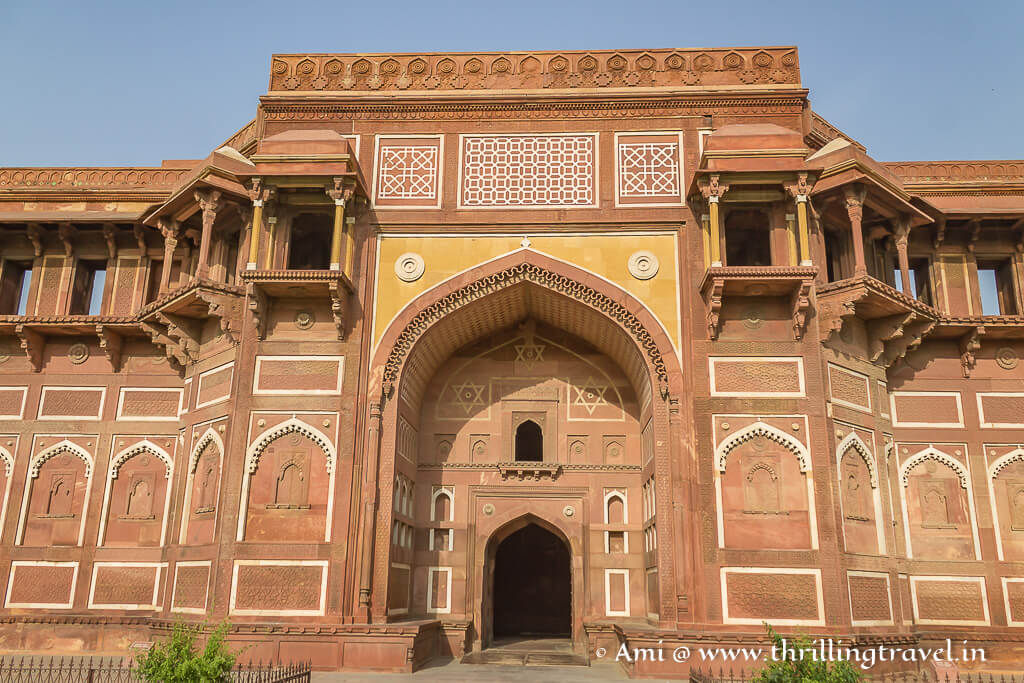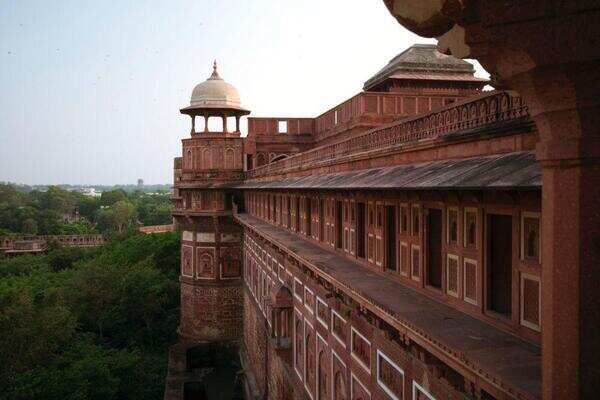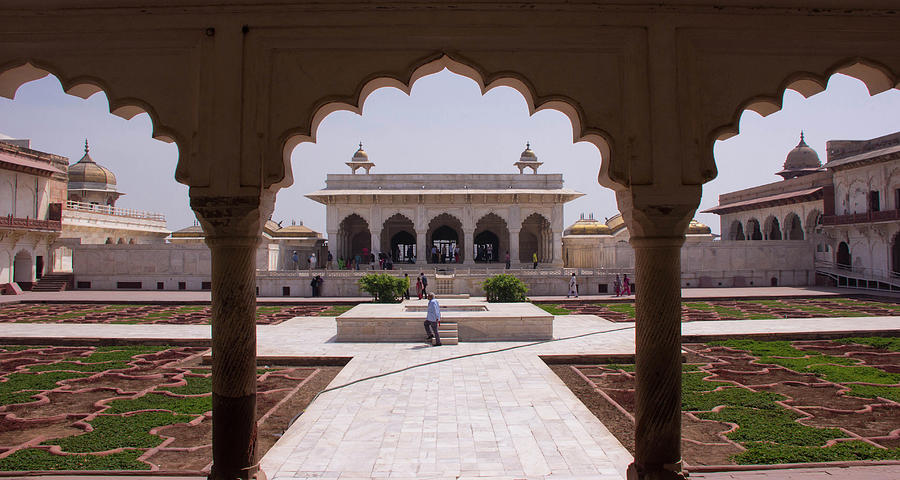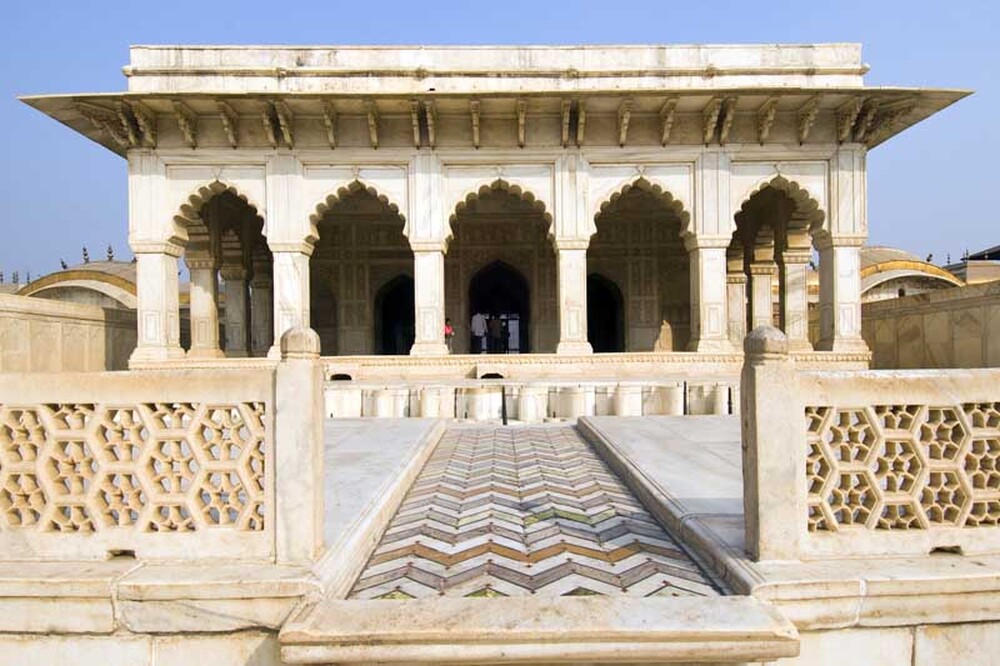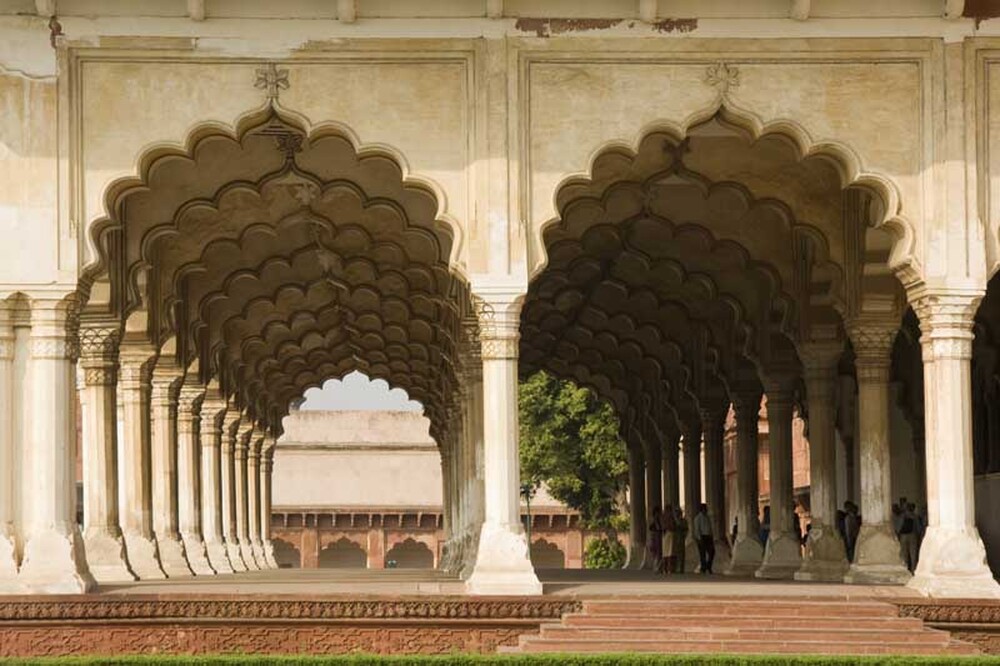Agra Fort
The Agra Fort, located in the city of Agra, India, is a UNESCO World Heritage Site and a remarkable example of Mughal architecture and history. It served as the main residence of the Mughal emperors until 1638, when the capital shifted to Delhi. Situated about 2.5 km northwest of the Taj Mahal, the fort is often described as a walled city. Its history dates back to the First Battle of Panipat in 1526 when Babur stayed there after defeating Ibrahim Lodi and later built a baoli (stepwell). Humayun was crowned in the fort in 1530 but lost it to Sher Shah Suri in 1540. After recapturing it briefly in 1555, it was again lost to Hemu in 1556 before Akbar reclaimed it and established Agra as his capital in 1558. Akbar rebuilt the fort with red sandstone sourced from Rajasthan, employing over 4,000 workers daily to complete the construction in 1573.
The fort underwent significant transformation during the reign of Akbar’s grandson, Shah Jahan, who added magnificent white marble structures and remodeled many earlier buildings to suit his architectural style. Shah Jahan, best known for building the Taj Mahal in memory of his wife Mumtaz Mahal, was later deposed by his son, Aurangzeb. He spent his final years imprisoned in the fort, reportedly dying in the Muasamman Burj, a tower with a marble balcony offering a view of the Taj Mahal. The fort’s grand structures, including the Sheesh Mahal (Palace of Mirrors) and other marble edifices, reflect the splendor of Mughal art and culture.
Over the centuries, the Agra Fort witnessed numerous battles and political changes. It was captured by the Marathas in the early 18th century and subsequently changed hands multiple times. Following the Marathas' defeat in the Third Battle of Panipat in 1761, they lost control of the region temporarily but regained the fort in 1785 under Mahadji Shinde. The British seized it during the Second Anglo-Maratha War in 1803. The fort also played a key role during the Indian Rebellion of 1857, symbolizing resistance to British rule. This pivotal event led to the end of the British East India Company’s dominance and ushered in direct governance by the British Crown. Today, the Agra Fort stands as a testament to India’s rich history, blending architectural magnificence with the legacy of its rulers.
